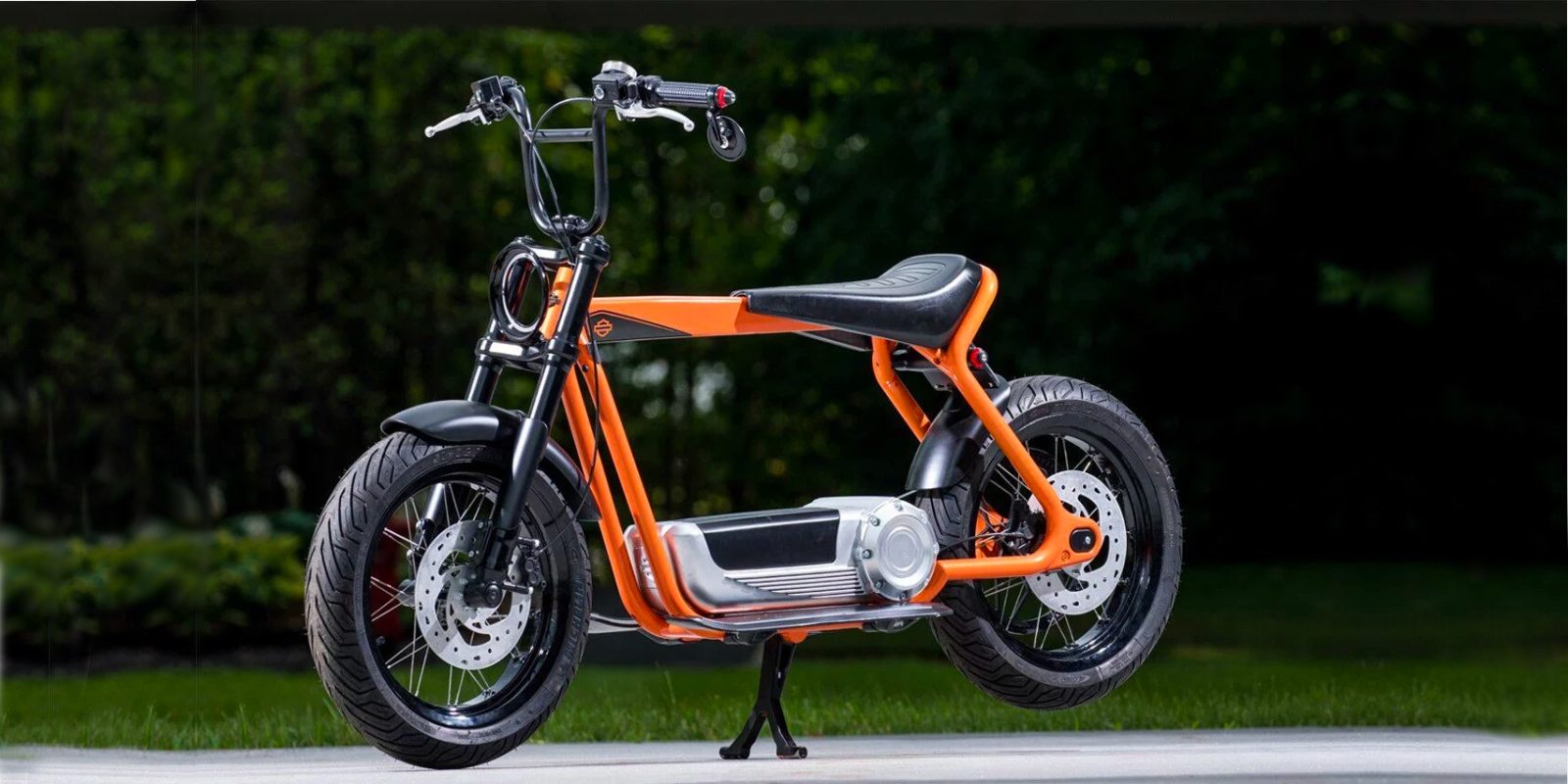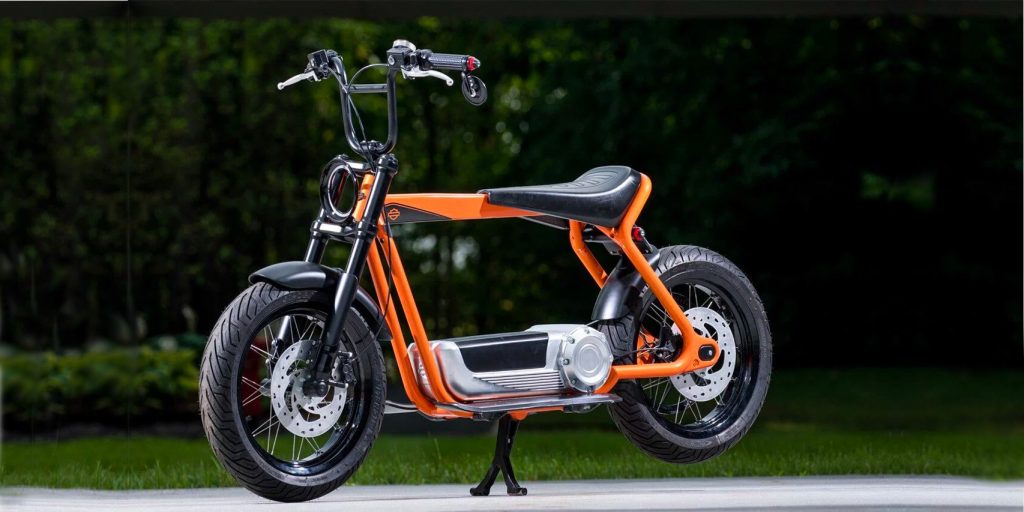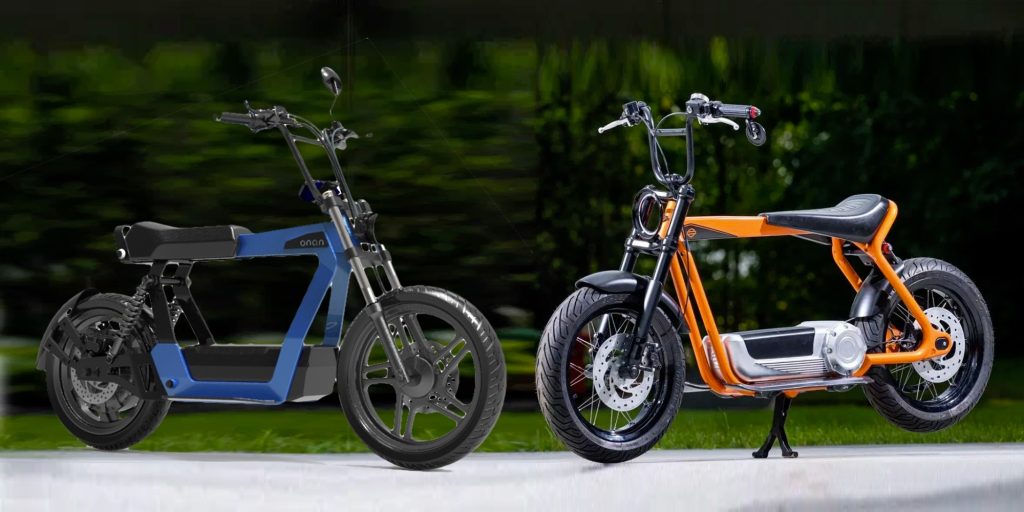
Sleek, street-legal, and brimming with potential, it was a concept that looked like the perfect entry point into urban electric mobility for youthful riders and city commuters alike. With Harley’s branding, a slick removable battery for easy charging, and design filings that showed a nearly production-ready machine, this could’ve been a breakout moment in light electric vehicles. But instead, it was shelved, leaving a gaping hole in a market that’s now bursting with demand for just this kind of ride.
The concept first surfaced in mid-2018, teasing a future of lightweight electric urban mobility under Harley’s storied banner. I remember it well; I was the one who broke the news nearly seven years ago today. As a young, fresher-faced electric mobility journalist, I could already see the coming wave of young riders who would flock to this thing.
Unlike the hulking powerhouse that was the LiveWire electric motorcycle that preceded it, this was a nimble, city-friendly ride, complete with removable battery, belt drive, comfortable floorboard, and inverted motorcycle front fork.
It was an instant hit, at least on paper. The media and the public alike adored it. So Harley moved forward. In early 2019, H-D brought a proof-of-concept to the X-Games, giving the world our first look at a small yet awesome electric Harley moped. Sure, it was a bit prototype-y, equal parts garage build and senior design project. But it was obvious that Harley’s engineers were going full tilt in their skunkworks department, and a real-life electric moped with a Harley badge was rolling around the crowds in Aspen.


R&D continued, and the company submitted multiple EU design patents by 2020, showing highly refined styling cues, an impressive belt-driven motor housing in advanced stages of design, and a slick removable battery handle that helped drop the battery right into the motor housing for a sleek appearance. It was all evidence that they were quite far along in their designs for a production-worthy vehicle.
Fast forward to 2021: In a big shakeup that drastically rewrote Harley’s electric plans, LiveWire was officially spun off as a separate electric motorcycle brand. At the same time, the COVID-19 pandemic threw extreme uncertainty into the supply chain logistics for building light electric vehicles, with the e-bike industry somehow simultaneously booming and in complete disarray.
The sexy little Harley electric moped soon quietly faded from view.
H-D no longer talked about it, LiveWire didn’t appear to pick it back up, and its digital trail essentially went cold.

But if you’ll allow me to beat this dead horsepower just one more time, I’d argue that the idea hasn’t lost its appeal – especially now. Today’s electric moped and light electric motorbike market is heating up, with riders increasingly opting for nimble, street-legal, electric two-wheelers.
Teens and young adults are flocking to light electric motorbikes and mopeds like Sur-Rons and Talarias, valuing affordability, simplicity, and urban practicality. Harley – or LiveWire – could’ve positioned this concept right in the sweet spot. In fact, I’d argue that if this moped existed now, plenty of young riders would prefer its relaxed and comfortable ride compared to a Sur Ron’s high saddle and off-road geometry (not to mention that Sur Rons aren’t even street legal).
Many have long bemoaned the lack of a cruiser option in the e-motorcycle market. Consider this the cruiser of the e-moped market. Relaxed yet capable. Comfortable yet powerful. It’s what everyone wanted, even if they didn’t know it yet.
A built-and-branded electric moped from Harley or LiveWire would have carried serious cachet, too. LiveWire would have been the right brand, free from the storied yet heavy legacy of its bar-and-shield parent company. Sure, LiveWire’s sales aren’t doing great right now, but that doesn’t appear to be brand-related. Marketing seems to be doing everything right, but for a company that is selling $17,000 electric motorcycles. Impressive bikes in their own right, yet unaffordable to their young target market.
To paraphrase, you can lead a horse to water, but you can’t make him finance it.
But a $4,000 electric moped from a company like LiveWire, whose branding department feels like it’s run by the rare breed of millennials that are fluent in Gen Z – that could sell. They already speak the language. They just need to be armed with the right product.








And I really don’t think it would just be for nostalgic fans, especially not under a new brand like LiveWire. I bet that if you asked most anyone under the age of 25 today, they wouldn’t even know LiveWire was born in a Harley-Davidson boardroom.
And considering how approachable the electric bicycle market has made electric two-wheelers, a moped like this might have served as a gateway to even larger electric two-wheelers as riders age up. An electric moped in high school and college, then an electric motorcycle once they get a real job – talk about upward mobility!
The future was there. The market was just down the road. And with those now ghostly design filings showing a mature, nearly production-ready design, it’s clear the company had almost all the pieces in place. All that was missing was the final green light.

So why didn’t it happen?
Harley, then under financial pressure, prioritized the LiveWire electric motorcycle as its 100 mph+ high-performance e-motorcycle. It made sense. If you’re Harley-Davidson and you’re trying to go electric at a time when almost no one else has seen the electric scribbles on the wall, you’re going to have to impress. And a scooter, however fun it looks, doesn’t shout at the same volume. Moped concepts didn’t align with the bold “electric muscle bike” image they were shaping. Meanwhile, spiking development costs and supply chain delays likely pushed lighter, cheaper models farther down the priority list.
That’s unfortunate, because the current micromobility landscape is fertile ground for a brand-backed electric moped. Look around: E-moped startups – many powered by Chinese OEM parts – are booming, but few carry legitimacy or heritage, not to mention a nationwide sales and servicing network. Imagine a LiveWire-branded moped, street-legal, reliable, and backed by US customer support and parts. Suddenly, that moped becomes more than a novelty – it becomes a credible step into electric commuting for a new generation.
Even without ever making it to production, the concept made an impact. In 2021, I highlighted a Chinese company that ripped off Harley’s design, complete with low-slung battery and retro-modern styling. It was a surprisingly true-to-form imitation. Not a perfect clone, but close. And it was proof that Harley’s vision was both compelling and practical enough to inspire wannabes who were prepared to profit from a good idea. The Chinese were that one kid pointing at the other’s untouched lunch and asking, “You gonna eat that?”.

What they should have done
Sure, hindsight is 20/20. But here is where things should have gone.
Harley – or rather LiveWire– should have brought two versions of this moped to market. The first should have been a purpose-built light electric moped, designed explicitly for street-legal travel at either 30 or 35 mph (the two most common speed limits for individual US states’ moped-class vehicles). The second could have offered a higher top speed, perhaps 45-50 mph, and would be a motorcycle-class vehicle in nearly all of the US.
The former would have been fast enough for real urban commuting, but slow enough to avoid license and registration headaches in many states, or at least reduce them to something cheaper and easier to manage. And with more US states insisting on throttle e-bikes being limited to a true 20 mph, the extra speed of a 30-35 mph throttle moped would be a real differentiator. The second, higher-spec model would allow riders to hang with cars on faster roads while still keeping performance muted enough to allow modestly-sized (and modestly priced) battery and motor choice.
A removable battery, belt drive, LED lighting, and modular accessories would’ve made these things flexible and affordable, perhaps priced at around US $3,499 to $3,999 for the moped-class bike and perhaps $4,999 for the motorcycle-class bike. These two models would have been perfect for urban dwellers, campus life, and younger riders who wanted something more than an electric bicycle (which is why kids beg their parents for a Sur Ron), but it wouldn’t have been as intimidating or powerful as an honest-to-goodness motorcycle. The smaller model would have competed in price against a Sur Ron, been nearly as fast, plus be much more comfortable and have the added benefit of passenger capability.
And considering Harley’s model includes making a significant portion of profits from selling accessories (hmmm sounds like something else I’ve heard of… oh right, a local bicycle shop), there would have been ample room for fat margins from tons of cool accessories. Look no further than the cult of Super73 accessorizing to see how much young riders spend to turn their e-mopeds into one-of-a-kind rides. That battery compartment is also perfectly designed to allow different-sized batteries. The drop-in nature means you could upsell a taller battery with more range. Just like you can buy a 2Ah or 6Ah battery for your power drill, you could do the same with these batteries, keeping the purchase price lower and letting riders decide how much they want to spend on upgrades.
To its credit, Harley had actually teed this one up for itself almost flawlessly. It was right there, perfectly designed and positioned, waiting for that swing that simply never came.

To be fair, LiveWire isn’t completely ignoring the smaller end of the market. Or rather, they’re approaching it in their own way. We’ve been told that we’ll still get LiveWire electric maxi-scooters in 2026 via a KYMCO partnership. These big scooters will offer style and performance – but they’ll still almost certainly cost well over US $10,000. Meanwhile, that silent, fun-branded moped remains unbuilt, stuck in the concept archives.
If Harley or LiveWire ever reconsider, the timing has never been better. The youth are ready, the charging infrastructure is fully developed (hint: it’s the wall plug by your ankle), and consumers crave practical, street-legal light vehicles. Now, it’s time to revisit that vision – or let someone else pick up the torch.
Imagine boarding that LiveWire moped on your first ride, feeling the ease, the heritage, and the promise of what could have been. That’s an entry-level electric future we’re still waiting for.

FTC: We use income earning auto affiliate links. More.












